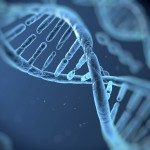Link to Pubmed [PMID] – 25060280
Hum. Hered. 2014;77(1-4):167-74
Located at the cross-road between Europe and Africa, Tunisia is a North African country of 11 million inhabitants. Throughout its history, it has been invaded by different ethnic groups. These historical events, and consanguinity, have impacted on the spectrum and frequency of genetic diseases in Tunisia. Investigations of Tunisian families have significantly contributed to elucidation of the genetic bases of rare disorders, providing an invaluable resource of cases due to particular familial structures (large family size, consanguinity and share of common ancestors). In the present study, we report on and review different aspects of consanguinity in the Tunisian population as a case study, representing several features common to neighboring or historically related countries in North Africa and the Middle East. Despite the educational, demographic and behavioral changes that have taken place during the last four decades, familial and geographical endogamy still exist at high frequencies, especially in rural areas. The health implications of consanguinity in Tunisian families include an increased risk of the expression of autosomal recessive diseases and particular phenotypic expressions. With new sequencing technologies, the investigation of consanguineous populations provides a unique opportunity to better evaluate the impact of consanguinity on the genome dynamic and on health, in addition to a better understanding of the genetic bases of diseases.



